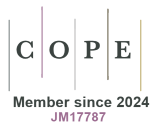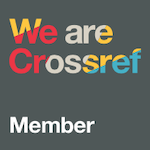A Budget impact analysis of adalimumab biosimilar: the Italian context
Analisi di budget impact del biosimilare di adalimumab: lo scenario italiano
DOI:
https://doi.org/10.33393/abtpn.2019.280Keywords:
Adalimumab, Anti-TNF, Biosimilar, cost, Italian NHSAbstract
Introduction: Patients’ quality of life impairment together with a heavy burden to the NHS and society are caused by chronic inflammatory diseases. Their treatment substantially improved with the advent of biological drugs (such as adalimumab), but these drugs are very expensive. At present, the patent protection of adalimumab (Humira®) has expired, and a biosimilar (Hyrimoz®) has been approved. Since the biosimilar price is expected to be lower as compared with the originator’s, the present Drug Budget Impact analysis tries to evaluate whether and how much profitable the biosimilar availability will be for the Italian NHS, in terms of cost containment (savings).
Methods and results : The time horizon in the analysis model is five years. The initial overall number of patients treated with adalimumab is estimated (based on the Italian population, the disease prevalence rates, the proportion of patients under treatment and adalimumab market share) and kept constant in time. However, the model assumes that, year by year, patients in treatment with the originator will partly switch to the biosimilar (based on a prudent estimate of the uptake rate), while (due to a bolder estimate) a larger share of naïve patients will directly start with the biosimilar. Thanks to such assumptions, total number of patients treated with adalimumab (separately with the originator and with the biosimilar) is estimated, with the respective total costs.
Conclusions: According to the present analysis, the availability of the biosimilar would generate cumulated savings (in five years) as high as €260 millions for the Italian NHS.
References
- De Vol R, Bedroussian A. An unhealthy America: The economic burden of chronic disease. The Milken Institute, 2007. Disponibile sul sito: http://assets1c.milkeninstitute.org/assets/Publication/ResearchReport/PDF/chronic_disease_report.pdf Accesso: Marzo 2019.
- Uhlig T, Loge JH, Kristiansen IS et al. Quantification of reduced health-related quality of life in patients with rheumatoid arthritis compared to the general population. J Rheumatol. 2007;34(6):1241-7.
- Lundkvist J, Kastang F, Kobelt G. The burden of rheumatoid arthritis and access to treatment: health burden and costs. Eur J Health Econ. 2008;8 Suppl 2:549-60.
- Marcellusi R, Viti R, Capone A et al. Costi diretti e indiretti assorbiti dalle patologie HCV-indotte in Italia: stima basata su una metodologia probabilistica di Cost of Illness. PharmacoEcon Ital Res Artic. 2014; online, DOI: 10.1007/s40276-014-0023-9
- Allegri M, Lucioni C, Mazzi S et al. Il costo sociale del dolore cronico in Italia. Glob Reg Health Technol Assess. 2014; online, DOI: 10.5301/GRHTA.5000187
- Kobelt G, Berg J, Lindgren P et al. Costs and quality of life in multiple sclerosis in Europe: method of assessment and analysis. Eur J Health Econ. 2006;7:S5-S13.
- de Waure C, Sferrazza A, Gualano MR et al. Epidemiologia e burden of disease dell’artrite reumatoide. Ital J Public Health. 2010;7(2) Suppl 2:S3-S13.
- Chen ML, Shah V, Patnaik R et al. Bioavailability and bioequivalence: an FDA regulatory overview. Pharm Res. 2001;18:1645-50.
- European Medicine Agency. Committee for Medicinal Products for Human Use (CHMP). Guidelines on Similar Biological Medicinal Products. CHMP/437/04, London, 2005. Disponibile sul sito: http://www.ema.europa.eu/docs/en_GB/document_library/Scientific_guideline/2009/09/WC500003517.pdf Accesso: Marzo 2019.
- European Medicine Agency. Guidelines on similar biological medicinal products, 2014. Disponibile sul sito: http://www.ema.europa.eu/docs/en_GB/document_library/Scientific_guideline/2013/05/WC500142978.pdf Accesso Marzo 2019.
- European Medicine Agency. Guideline on similar biological medicinal products containing biotechnology-derived proteins as active substance: non-clinical and clinical issues, 2013. Disponibile sul sito: http://www.ema.europa.eu/docs/en_GB/document_library/Scientific_guideline/2013/06/WC500144124.pdf Accesso Marzo 2019.
- Farmaci biologici e biosimilari. Scenari terapeutici e stima del risparmio per il Sistema Sanitario italiano. Centro Studi IQVIA Italia. Disponibile sul sito: http://magazine.imshealth.it/report/(IQVIA)_Farmaci_biologici_e_biosimilari.pdf Accesso Marzo 2019.
- IBG – Italian Biosimilars Group (Assogenerici). Report sul mercato italiano dei farmaci biosimilari nel terzo trimestre 2018. Disponibile sul sito: http://www.italianbiosimilarsgroup.it/en/studi-ed-analisi/biosimilari-in-italia/mercato-italiano-iii-trimestre-2018.html Accesso Marzo 2019.
- Mauskopf JA, Sullivan SD, Annemans L et al. Principles of good practice for budget impact analysis: report of the ISPOR Task Force on Good Research Practices—budget impact analysis. Value Health. 2007;10(5):336-47.
- Sullivan SD, Mauskopf JA, Augustovski F et al. Budget impact analysis principles of good practice: report of the ISPOR 2012 Budget Impact Analysis Good Practice II Task Force. Value Health. 2014;17(1):5-14.
- Marcellusi A, Bianchi L, Gasbarrini A et al. Impatto economico dei biosimilari in Italia: passato, presente e futuro di infliximab ed etanercept. Glob Reg Health Technol Assess. 2017;4(1):e175-e186.









